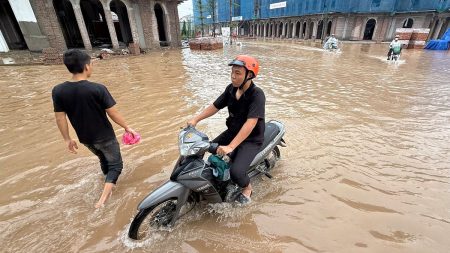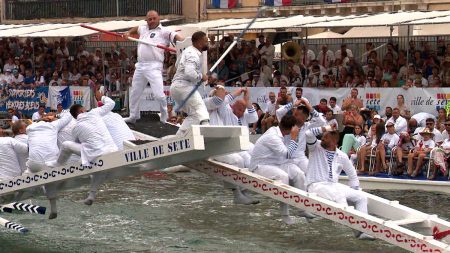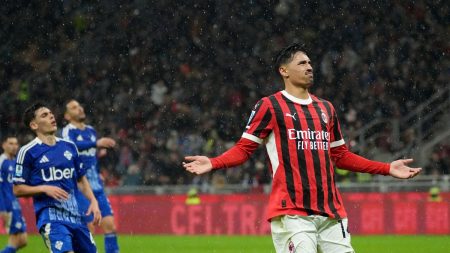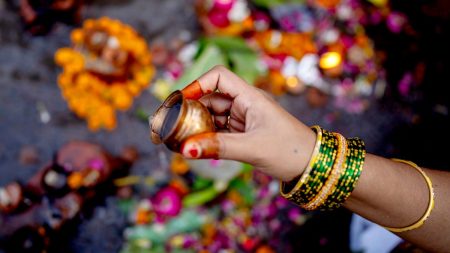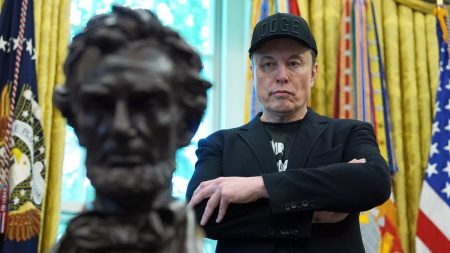The events of December 9th, 2024, marked a dramatic escalation in the ongoing Syrian conflict, symbolized by the toppling of a colossal statue of Hafez al-Assad in Dayr Atiyah. This act of defiance, echoing the iconic fall of Saddam Hussein’s statue in Baghdad during the 2003 Iraq War, served as a potent visual representation of the popular uprising against the Assad regime. Across Syria, citizens poured into the streets, their jubilation fueled by a collective sense of liberation as they dismantled symbols of Assad’s decades-long rule. The toppling of the statue in Dayr Atiyah was not an isolated incident but rather the culmination of mounting frustration and resentment towards the government, ignited by years of oppression, economic hardship, and the brutal suppression of dissent. This specific event, captured and disseminated rapidly through social media, became a powerful rallying cry, further galvanizing the opposition and inspiring similar acts of protest throughout the country.
The destruction of Assad’s effigy represented a profound symbolic break with the past. Hafez al-Assad, father of the current president Bashar al-Assad, ruled Syria with an iron fist for thirty years, establishing a pervasive cult of personality and a highly centralized, authoritarian government. His image, ubiquitous throughout the country in the form of statues, portraits, and propaganda posters, served as a constant reminder of the regime’s power and control. The act of dismantling these symbols, therefore, represented not just a rejection of Bashar al-Assad’s leadership but also a repudiation of the entire Assad dynasty and its legacy of repression. The toppling of the statue in Dayr Atiyah became a focal point for the expression of long-suppressed grievances and a powerful assertion of the people’s will to determine their own future.
The spontaneous eruption of protests on December 9th underscored the simmering discontent beneath the surface of Syrian society. Despite the government’s efforts to maintain a tight grip on power through surveillance, censorship, and brutal crackdowns on dissent, the underlying tensions and frustrations continued to fester. Years of economic hardship, exacerbated by international sanctions and government mismanagement, had taken a heavy toll on the Syrian population. The widespread poverty, unemployment, and lack of basic necessities created a breeding ground for resentment and anger, which eventually found expression in the widespread demonstrations. The toppling of the statue in Dayr Atiyah served as a catalyst, unleashing pent-up frustrations and propelling the protests into a broader movement challenging the legitimacy of the Assad regime.
The demonstrations that swept across Syria in the wake of the statue’s toppling were characterized by a palpable sense of hope and determination. The sight of citizens dismantling symbols of Assad’s rule, once considered untouchable, imbued the protesters with a sense of empowerment and agency. The shared experience of defiance created a powerful sense of solidarity among the demonstrators, transcending ethnic, religious, and regional divides. The events of December 9th marked a turning point in the Syrian uprising, signaling a shift in the balance of power and raising the possibility of genuine political change. However, the jubilation was tempered by the realization that the path to a democratic future would be fraught with challenges and likely met with fierce resistance from the entrenched power structure.
The government’s response to the escalating protests was swift and brutal. Security forces were deployed to quell the demonstrations, using tear gas, water cannons, and live ammunition against unarmed civilians. The violent crackdown resulted in numerous casualties, further inflaming the situation and fueling the protesters’ determination to resist. The international community condemned the government’s use of excessive force, calling for restraint and urging dialogue to address the underlying causes of the unrest. However, the Assad regime remained intransigent, viewing the protests as a threat to its survival and resorting to increasingly repressive measures to maintain control. The events of December 9th, while a symbolic victory for the opposition, marked a dangerous escalation in the conflict, raising fears of a further descent into violence and instability.
The toppling of Hafez al-Assad’s statue in Dayr Atiyah and the subsequent wave of protests across Syria represented a pivotal moment in the ongoing struggle for political change. The symbolic act of defiance resonated deeply within Syrian society, galvanizing the opposition and exposing the fragility of the Assad regime’s grip on power. While the immediate aftermath was marked by violent repression and uncertainty, the events of December 9th served as a powerful testament to the resilience and determination of the Syrian people in their pursuit of freedom and self-determination. The road ahead remained perilous, but the toppling of the statue provided a glimmer of hope, a tangible symbol of the potential for change and a reminder that even the most seemingly entrenched dictatorships can be challenged by the collective will of the people. The world watched with bated breath, the future of Syria hanging precariously in the balance.






